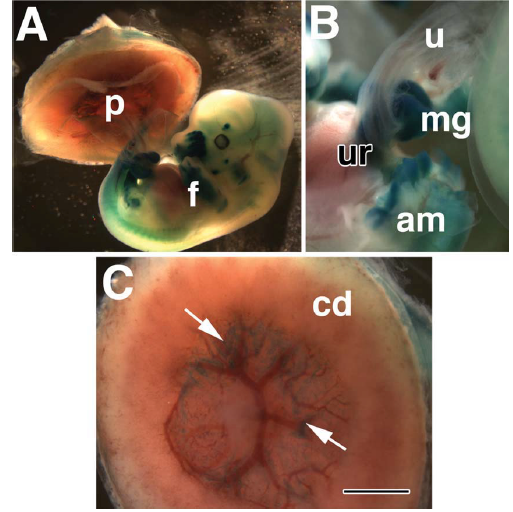Abstract
Although many fetal birth defects, particularly those of the body wall and gut, are associated with abnormalities of the umbilical cord, the developmental relationship between these structures is largely obscure. Recently, genetic analysis of mid-gestation mouse embryos revealed that defects in Hedgehog signaling led to omphalocoele, or failure of the body wall to close at the umbilical ring (Matsumaru et al. [ 2011] PLos One 6:e16260). However, systematic spatiotemporal localization of Hedgehog signaling in the allantois, or umbilical precursor tissue, and the surrounding regions has not been documented. Here, a combination of reagents, including the Ptc1:lacZ and Runx1:lacZ reporter mice, immunohistochemistry for Smoothened (Smo), Sonic Hedgehog (Shh), and Indian hedgehog (Ihh), and detailed PECAM-1/Flk-1/Runx-1 analysis, revealed robust Hedgehog signaling in previously undocumented posterior sites over an extended period of time (∼7.0-9.75 dpc). These included the recently described proximal walls of the allantois (Ventral and Dorsal Cuboidal Mesothelia; VCM and DCM, respectively); the ventral embryonic surface continuous with them; hemogenic arterial endothelia; hematopoietic cells; the hindgut; ventral ectodermal ridge (VER); chorionic ectoderm; and the intraplacental yolk sac (IPY), which appeared to be a site of placental hematopoiesis. This map of Hedgehog signaling in the posterior region of the mouse conceptus will provide a valuable foundation upon which to elucidate the origin of many posterior midline abnormalities, especially those of the umbilical cord and associated fetal defects.
